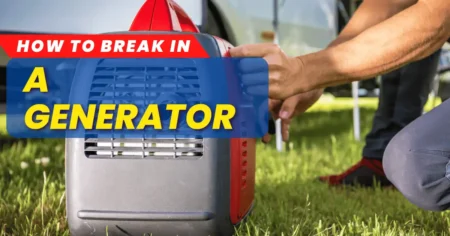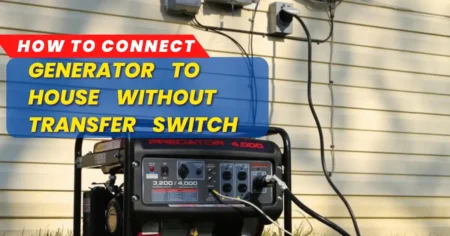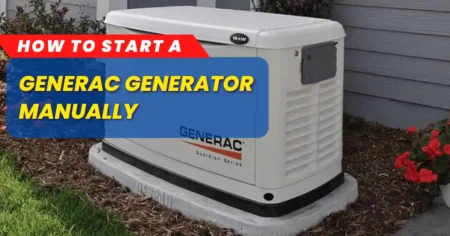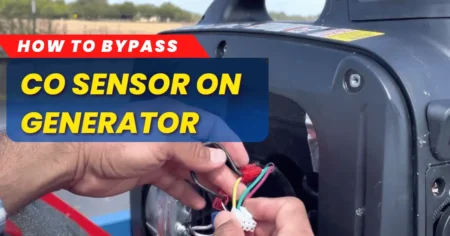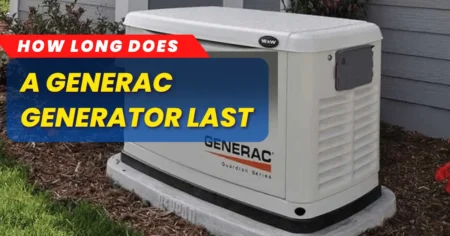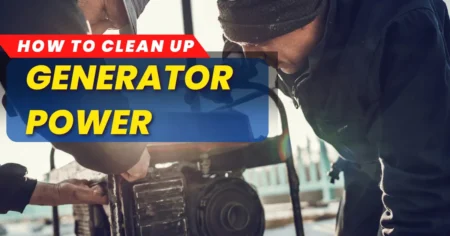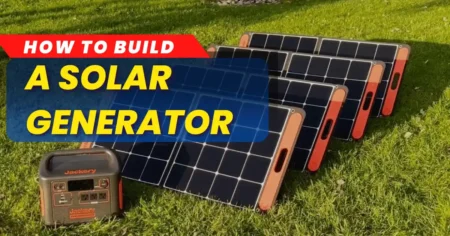Are you looking for What Size Generator For 200 AMP Service? During a blackout, there are numerous options to power your home. One of the best ways to resurrect your home during a power loss is to connect a portable generator. Power outages can occasionally be avoided but often occur without warning.
You may find in certain situations that you require more portable generators to adequately power the residence. You should think about how much energy your residence typically uses if you wish to run every appliance.
If not, you will need to enumerate all of the devices and appliances that you plan to use with the generator, along with their specific wattages. Selecting a generator with a minimum power capacity of 72,000 watts is advised to power a 200-amp service during an outage.
This will guarantee that your generator has adequate power to run your essential appliances without overloading or tripping. We’ll look into the technical factors in choosing the right generator size for a 200 amp service in this article.
How to Find Out the Best Generator Size for 200 AMP Service?
The simpler technique is recommended for individuals who simply want a broad notion of what sizes they will probably have to work with. The more sophisticated one is meant for people who desire a setup that is ideal, safe, and more effective.
Therefore, while sizing, you cannot use more than 48,000 watts. At 24,000 watts, it is half that for a service with 100 amps. Additionally, some electricians advise you to utilize no more than 85% of the service’s complete capacity.
The electricity needed to meet a house’s needs can be obtained using a 200 amp service. Various homes require varying quantities of electricity due to their varying utility needs. You can verify the rating for your amp service and the number of watts that will run through each circuit by looking at the voltage rating.
What Size Generator Should I Consider for 200 AMP Service?
For a 200 AMP power service, a 20KW-25KW generator is more than enough! You must figure out how much power each of the necessary systems and appliances will use overall to choose the right size generator for a 200-amp connection.
The maximum voltage that a 200-amp service can supply to a house is usually 240 volts. A portable generator big enough to run a typical household’s everyday operations is what you need in case of a blackout.
Knowing a household’s wattage requirements will help you choose the right generator. To choose the appropriate generator size, you must first evaluate the real electrical load of your house, as not all of this electricity will be used at once.
This keeps your generator from overloading or tripping and acts as a buffer against power surges and fluctuations.
How Can I Choose a Right Size Generator for 200 AMP Service?
A 200 Amp service requires careful consideration of several following considerations when choosing a generator size;
- Find out how many watts your planned generator-powered electrical demand will require in total.
- All of the lights, appliances, and other electronics that will be linked to the generator fall under this category.
- Each device’s wattage rating can be found in the handbook or on the label.
- A margin of error should be allowed for any increased loads or possible power spikes.
- When choosing a generator, be sure its power output meets or exceeds your entire power needs.
- A 20-to-25-kilowatt generator should be sufficient for a 200 Amp service.
- The wattage of each gadget you intend to connect to the generator should be added up to determine the overall power needed.
- To get the overall power needed, sum up the wattage of every device you intend to attach to the generator.
Ways to Find Out the Right Size of a Generator
It is always beneficial to calculate the precise size of the entire load. Our electric bills rarely show the same expenditures and consumption values, after all. You don’t have the same overall loads even though many residences have 200-amp services.
Here are two approaches you can take, or if you have the resources, feel free to use them both. Your whole load must be determined first. From there, you must compute the overall wattage and, ultimately, the size of the generator.
1) Use a Clamp Device
To quickly measure the actual, total current, use a clamp meter. Put the gadget in place over the service panel’s primary feeder wires. Before you do this, turn on all of the appliances you intend to use your generator for.
Now, it’s time to calculate the full load in KW. This way, you can calculate the actual size of the generator you need to power your house or for 200 AMP service.
2) Calculate the Wattage of Each Appliance
To find out the precise wattages of any device, consult the nameplate or contact the manufacturer. The running and surge wattages can then be calculated. An appliance, gadget, or fixture’s rating usually corresponds to its running watts.
This is the data that is often displayed on its label or plate. On the other side, by multiplying the running wattage by three, you may approximate the surge wattage roughly. It is advisable to inquire directly with the manufacturer about the expected surge wattage for each piece of equipment.
For what reason? The surge wattage of appliances is never constant. Upon obtaining the combined running and surge wattage figures, confirm that the generator’s dimensions suit both requirements.
What are the Key Considerations to Choose a 200 AMP Generator?
It might be a little intimidating to select portable generators in advance of power outages, particularly if you want to use every appliance in your home while the power is off. When the generator’s capacity to generate power is surpassed, certain models incorporate a load management system that keeps particular appliances at bay.
You don’t have to get a generator that is the same size as an enormous home. When the power goes off, you might have a sub-panel that only has the precise loads that are required.
-
Choose a Generator that has a Circuit Braker Slot
Purchasing a small or large generator does not negate the fact that not every household device can be powered by a particular size generator. To safeguard the generator in the event of an overload, both portable and standby generators must include circuit breaker slots.
The same rationale underlies the existence of the load management system. On the other hand, a single-pole breaker that fits into the one breaker slot will operate quickly and effectively. Still, you cannot afford to take a chance with a direct connection and rely solely on the load management system.
Separate panels for the appropriate appliances only in the event of a power outage are an additional means of safeguarding the generator. But you don’t need to worry about overloading the generator if your service panel is 200 amps.
-
THD Feature
You will want a generator fitted with the THD if you have sensitive electronics. By starting up slowly, the THD will prevent damage to the delicate components. The differences in sine waves between DC and AC power sources may result in damage.
When choosing generators, one consideration is the serving size. But some appliances are always going to be among the things that any generator can handle.
-
Fuel Tank Capacity
Most power interruptions are unpredictable and unplanned. You never know when power will return, unless it’s a regular and persistent outage. To run the generator for an extended amount of time in cold weather or when the next petrol station is far away, you’ll need a large fuel tank.
Having a large fuel tank is your next best option if you must utilize electric heat, which will reduce fuel efficiency. A large fuel tank will make operation a little more seamless.
-
Check for a Quiet Operating Option
While the generator is operating, a low-tone muffler will make sure that the noise level is maintained. Everything will be as perfect as possible with a quiet generator, and your home will function as if there is no power loss. These days, the most sought-after generators on the market are the quietest ones.
-
Prefer a 3-Phase Generator
Because a 3-phase generator may be used for a wide range of tasks, purchasing one will be more beneficial than purchasing a single-phase generator. While you’re at it, make sure to grab a portable one. To assist you in selecting the appropriate transfer switch size, speak with your certified generator inspector.
-
Check for Portability
A generator that is portable at all times is what you want. A smart place to start is with foldable handles and wheels. If you are alone, you will not be able to carry the generator on your back, thus it best has wheels.
To facilitate your work and provide you with more possibilities, the generator needs to have more than two outputs.
Final Words
Your planned overall load on the generator will always determine the right size of a generator even for 200 AMP service. You should have no trouble determining the appropriate size for your requirements if you follow the procedures and methods provided in this post.
However, a 200-amp service installation’s price will vary depending on several variables. The best way to get a more precise pricing estimate is to speak with a licensed electrician. To put it simply, your 200-amp service panel requires a generator that can produce between 15 and 20 kW.
Once you’ve reduced it, all you have to do is review the specifications of the generator to make sure it meets your demands.
See From Us:



